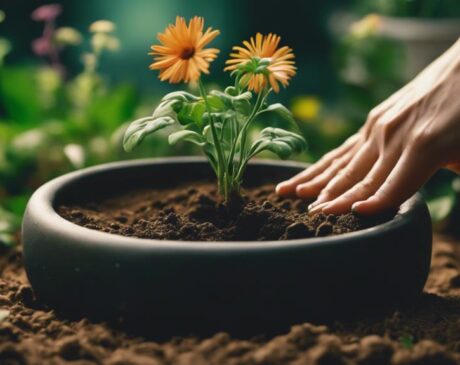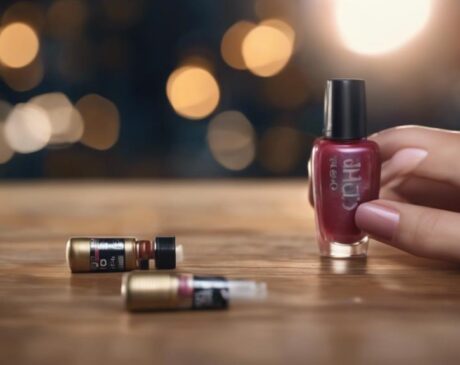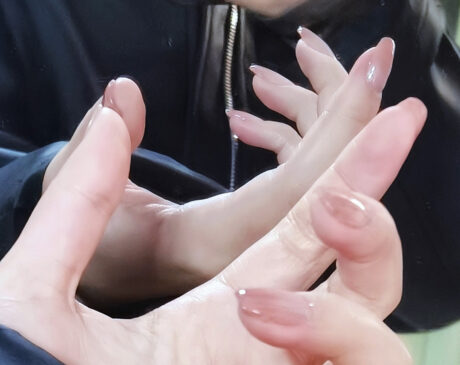Why Is My Black Gel Polish Not Curing?
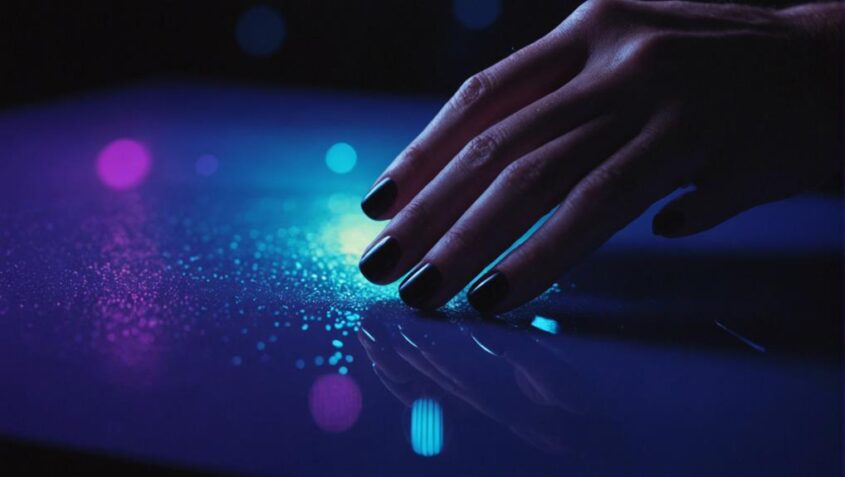
Insufficient UV/LED light exposure can cause incomplete curing of black gel polish, crucial for durability. Specific wavelengths are necessary for effective polymerization, so follow manufacturer's curing time guidelines and use high-quality lamps with the correct spectrum. Poor application techniques like thick layers, improper cure times, and skin contact issues can also impede curing. Applying gel polish too thickly can hinder proper curing. Incorrect curing times result in a sticky or brittle finish, so follow brand-specific instructions meticulously. Troubleshoot base or top coat issues by ensuring thin, even layers and compatibility. Uncover more tips to achieve flawless results.
Key Takeaways
- Inadequate UV/LED light exposure may cause incomplete curing of black gel polish.
- Thin application layers and proper cure time are vital for even curing.
- Excessive thickness of gel polish can impede the curing process.
- Incorrect curing times, either under or over, can result in curing issues.
- Base and top coat application must be done correctly to ensure proper curing of black gel polish.
Inadequate UV/LED Light Exposure
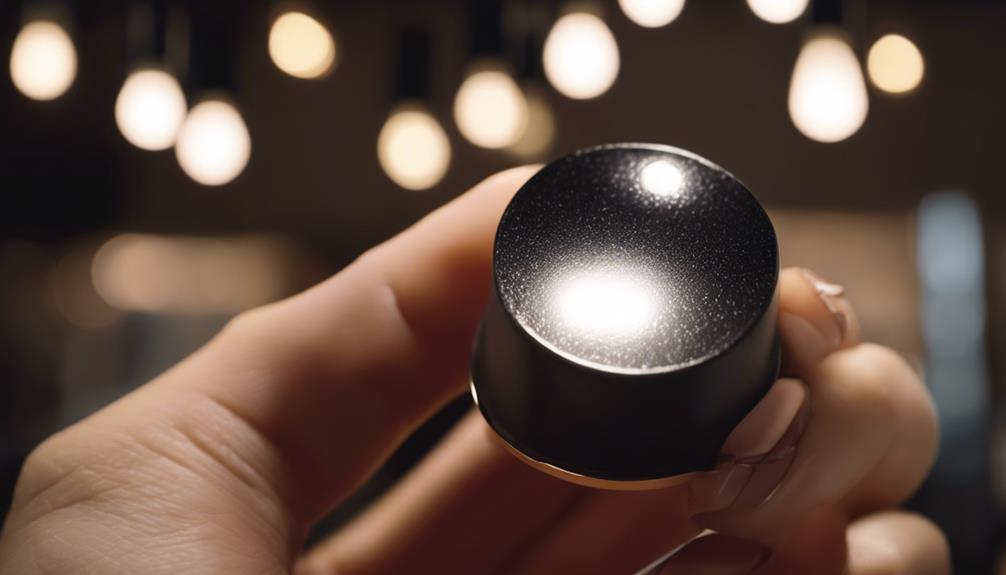
Insufficient exposure to UV or LED light during the curing process can result in black gel polish not fully hardening or curing properly. Proper curing is essential for achieving a durable and long-lasting manicure. Black gel polish, in particular, requires adequate exposure to the specific wavelengths of light to initiate the polymerization process effectively.
To ensure optimal curing, it is crucial to follow the manufacturer's guidelines regarding the recommended curing times for the specific gel polish being used. Investing in a high-quality UV or LED lamp with adequate wattage and the correct light spectrum can also significantly impact the curing process. Additionally, positioning the nails correctly under the lamp and avoiding any shadowing effects will help ensure uniform curing.
Innovations in UV and LED technology continue to improve curing efficiency, with newer lamps offering faster curing times and better coverage. Staying updated on these advancements and utilizing the latest curing equipment can further enhance the curing process and result in perfectly cured black gel polish manicures.
Poor Application Technique
When applying black gel polish, mastering proper technique is crucial for achieving a flawless and long-lasting manicure. To ensure the best results, consider the following key points:
- Thin Layers: Apply thin, even layers of black gel polish to prevent uneven curing and ensure thorough exposure to the UV/LED light. Thick layers can lead to under-curing, causing the polish to remain tacky or not cure fully.
- Proper Cure Time: Follow the manufacturer's guidelines for the recommended curing time. Under-curing can result in a sticky layer on the nails, while over-curing may cause the gel polish to crack or peel prematurely.
- Avoid Skin Contact: Be meticulous in applying the gel polish to the nails only, avoiding contact with the skin surrounding the nails. Any polish on the skin can lead to lifting and premature chipping as the gel polish separates from the skin during everyday activities.
Gel Polish Too Thick
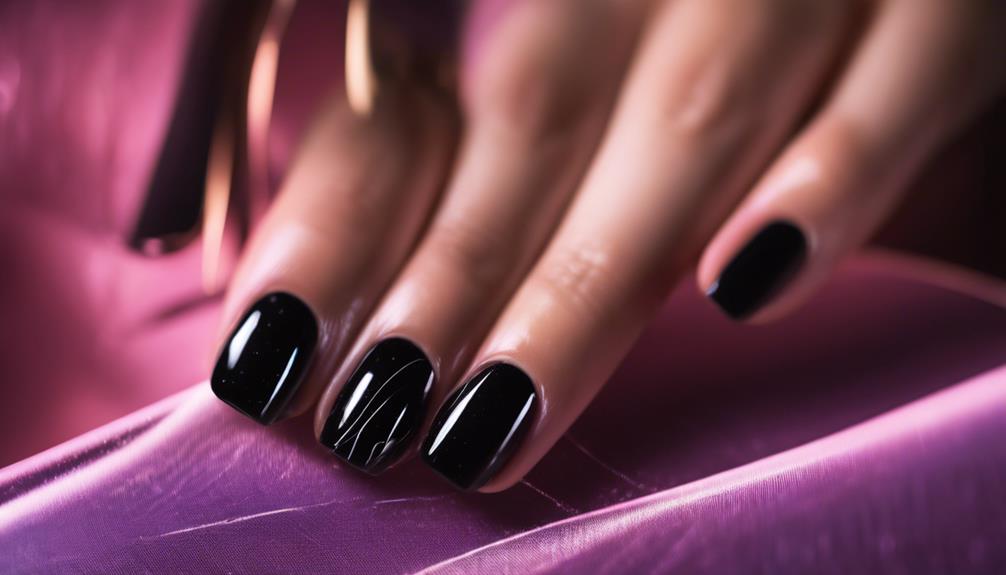
Excessive thickness of gel polish can impede proper curing, leading to potential issues with the final finish and durability of the manicure. When gel polish is applied too thickly, UV or LED light may struggle to penetrate through all layers evenly, resulting in an incomplete cure. This incomplete curing can manifest as a sticky or tacky layer on the surface of the manicure, which not only affects the aesthetic appeal but also compromises the durability of the gel polish.
To avoid these issues, it is crucial to apply gel polish in thin, even layers. Thin layers allow the light to penetrate more effectively, ensuring thorough curing and a solid bond to the nail. Additionally, multiple thin layers are preferable to one thick layer, as each layer can cure properly before the next one is applied, promoting a stronger and longer-lasting manicure. By paying attention to the thickness of the gel polish during application, you can enhance the curing process and achieve a flawless, durable finish.
Incorrect Curing Time
A precise understanding and adherence to the recommended curing times are crucial for achieving optimal results when using gel polish. Here are three key points to consider regarding incorrect curing times:
- Under-Curing: Not allowing the gel polish to cure for the full recommended time can result in a sticky or tacky layer on the nails. This sticky residue is the uncured polish that needs more time under the UV or LED lamp to properly harden.
- Over-Curing: Conversely, curing the gel polish for longer than necessary can lead to over-drying, which makes the polish brittle and prone to chipping. It's essential to follow the manufacturer's instructions for curing times to prevent this issue.
- Variable Curing Times: Different brands and types of gel polish may require different curing times. It's essential to understand the specific needs of the gel polish you are using to achieve the best results. Always refer to the guidelines provided by the manufacturer to ensure proper curing and a long-lasting manicure.
Base or Top Coat Issues
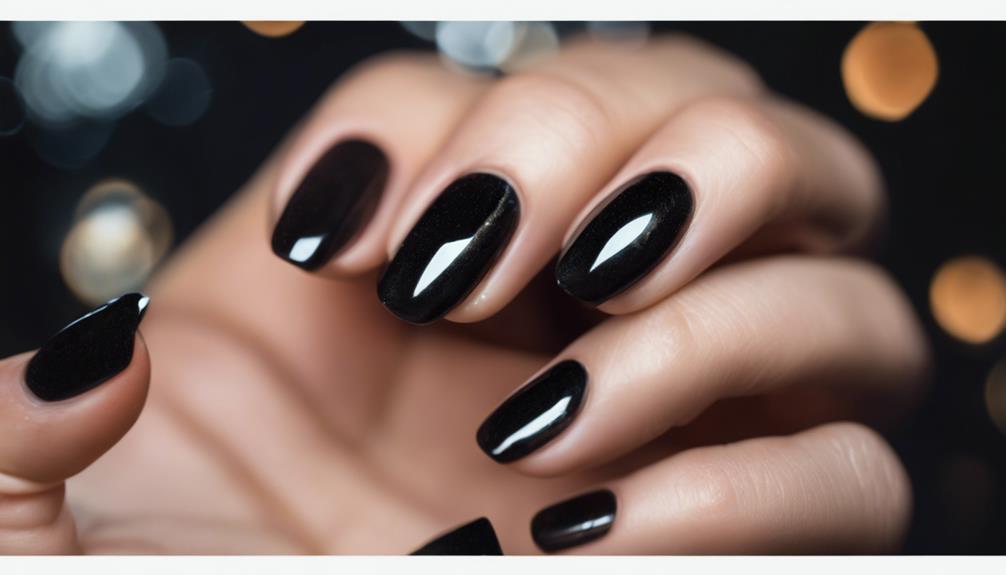
To address potential challenges in achieving optimal gel polish results, attention must be focused on potential issues that may arise with the application of base or top coats. When encountering problems with black gel polish curing, issues related to base or top coats could be a significant factor. Firstly, if the base coat is too thick or unevenly applied, it can create an uneven surface that affects the curing process. To combat this, ensure the base coat is applied in thin, even layers to promote proper adhesion and curing. Secondly, using an incompatible top coat can lead to improper curing of the black gel polish. It is essential to use a top coat specifically designed to work with the gel polish brand being used to achieve the desired results. By paying close attention to the application of base and top coats, users can troubleshoot and overcome issues related to black gel polish curing, ensuring a flawless and durable manicure.
Frequently Asked Questions
Can Using Old Gel Polish Cause Curing Issues?
Could antiquated gel polish impede the curing process? Using expired gel polish may diminish curing efficacy as chemical composition deteriorates over time. Optimal results stem from fresh products to ensure proper curing outcomes.
Does Humidity Affect Gel Polish Curing?
Humidity can significantly impact gel polish curing. High humidity levels may slow down the curing process, leading to incomplete or uneven drying. Properly managing humidity levels in your workspace can help ensure optimal results when curing gel polish.
Can Using a Different Brand's Base Coat Affect Curing?
Using a different brand's base coat can impact curing as formulations vary. Chemical interactions between products can lead to inadequate curing. Optimal results are achieved by using products from the same brand to ensure compatibility and desired outcomes.
Will Applying Cuticle Oil Affect Gel Curing?
Applying cuticle oil prior to gel curing could interfere with the process by creating a barrier that hinders proper adhesion and curing. Ensure thorough cleansing of nails before applying gel polish to promote optimal bonding and curing results.
Can Gel Polish Color Affect Curing Time?
Gel polish color can impact curing time due to differing pigment densities. Dark colors like black may require longer curing periods or multiple curing cycles to fully set. Adjusting curing times based on color can help achieve optimal results.

